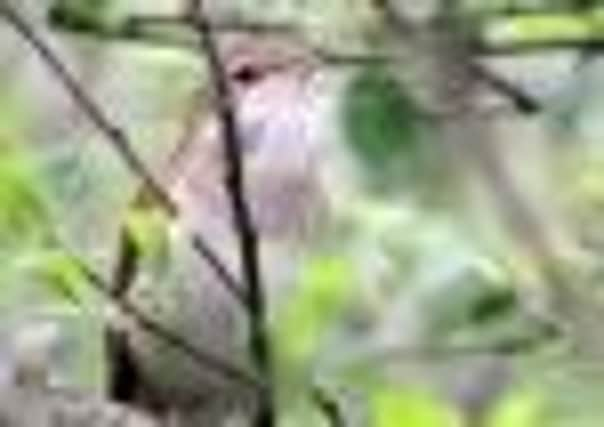Birdwatch: Where have all the nightingales gone?


But an increasing number of its former breeding haunts in this country are falling silent.
The British Trust for Ornithology reports that between 1995 and 2008, the population fell by a staggering 53 per cent and its range is contracting to the extreme south-east of England.
Advertisement
Hide AdAdvertisement
Hide AdMassive efforts to preserve the nightingale’s traditional coppice and scrub habitat seem to have had little impact, and now the BTO has launched a Nightingale Appeal to fund new research.
A CD of nightingale song is available for £10, plus £2.50 post and package, and can be ordered by phoning 01 842 750050 or by visiting www.bto.org/nightingales
This birds’ decline has already made its mark in our area with nightingales deserting their most northerly outpost on Thorne Moors, near Doncaster.
Ornithologist Bryan Wainwright, who collates all the records for the site (see his website, birdingsiteguide.com) and wrote Birds of Thorne Moors, tells me that, although there was a belated report of a singing nightingale there last summer, there have been no reports at all this year.
Advertisement
Hide AdAdvertisement
Hide AdHe says it is significant that nightingales share the same general wintering area of the Sahel, in central West Africa, as turtle doves and whinchats, both of which have also shown huge declines in numbers.
There has been a combination of drought and overgrazing in the area, which has led to an increase in desertification. Bryan thinks this is far more significant than any changes to the habitat of breeding areas in this country, which have been negligible.
Advances in science, in particular the miniaturisation of geolocator tracking devices, are making it possible to accurately track migrating birds back to Africa.
In 2009, 20 nightingales in this country were fitted with geolocators, costing £100 each.
Advertisement
Hide AdAdvertisement
Hide AdSeveral birds were re-caught in 2010, one of which provided a full download of its journey to Guinea-Bissau, in Africa, and back again.
It is planned to fit more nightingales with geolocators next year and eventually prove, one way or the other, if their decline in numbers, along with other birds, is caused by conditions on the African wintering grounds.
Next year’s survey will also show where the main remaining nightingale concentrations in this country are now found.
A number of red-necked phalaropes have been reported across England, straying off course on their way back to breeding grounds in Iceland.
Advertisement
Hide AdAdvertisement
Hide AdOne was seen at Beacon Ponds, East Yorkshire, while another was at the RSPB’s Saltholme reserve, on Teesside.
Last Thursday, a rare vagrant from North America, a least sandpiper, was seen at the Old Moor reserve, near Barnsley. It had gone the following day but could turn up again in the region.
A little stint was seen at Fairburn Ings and one or two curlew sandpipers have also been reported.
Ospreys were seen at Lindley Wood, near Otley, and Scaling Dam reservoir, near Whitby, while one was seen flying up Troutsdale past the raptor viewpoint at Wykeham Forest – with a fish in its beak.
The first honey buzzards have also been reported back at Wykeham with two seen midweek from the viewpoint.